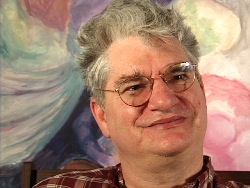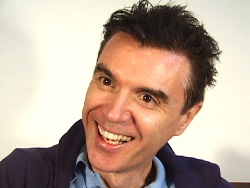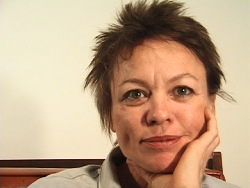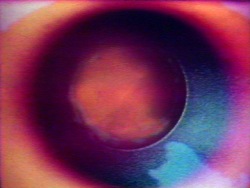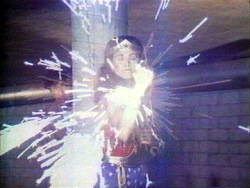Search Results
Search Results
Title Results
Your search returned 792 Titles
A legendary figure in contemporary art, Dan Graham has helped to redefine the role of the artist today. From his early magazine pieces, photography, films and video works, to his critical writings and architecture projects, Graham has pushed the boundaries of what culture is and how it functions. He is also an enthusiastic fan and observer of rock culture and its rituals, and has worked with many of the important figures in the New York music scene.
David Byrne was the leader of the Talking Heads, the enormously influential band that rose to international fame after emerging from the downtown New York New Wave/punk scene that revolved around CBGB in the late 1970's. His subsequent solo career has included recording, performing, producing, and directing and scoring films. Byrne has also recently returned to his roots as a visual artist, making work that explores the boundaries between external and internal space.
Glenn Branca emerged from New York's no-wave scene in the late 1970s, composing and performing radical guitar music with his bands The Static and Theoretical Girls. A rock iconoclast and avant-garde composer, he began orchestrating experimental symphonies of massed guitars and percussion for the Glenn Branca Ensemble in the 1980s, and continues to compose and perform.
One of the more respected figures in rock music, John Cale has made a career of drawing on both avant-garde and pop approaches, most famously in the Velvet Underground, the hugely influential band that he co-founded with Lou Reed in 1965. His distinctive touch as a writer and producer has led to collaborations with luminaries ranging from Terry Riley and LaMonte Young to Iggy Pop and Patti Smith.
Kim Gordon is bass player and vocalist for the experimental rock group Sonic Youth, a visual artist, and the founder of the clothing line X-girl. She has also played in the bands The Supreme Indifference, Free Kitten, and The Lucky Sperms. Her feminist lyrics, which address issues such as rape, eating disorders, and gender stereotypes, and her support of women musicians, have influenced a new generation of artists and musicians.
Laurie Anderson successfully works across cultural lines and disciplines, fusing a conceptual art framework with a firm grasp of popular aesthetics. In addition to exhibitions at word-class venues, she has produced commercial albums (garnering a hit single along the way), released a feature film, and created pieces for radio. Her large-scale theatrical productions, such as 1983's United States, synthesize visual effects, performance, music, and video.
Lydia Lunch has been an important figure in New York's downtown art and music scene since the late 1970s, when she led such seminal no-wave bands as Teenage Jesus & the Jerks and 8 Eyed Spy. Since then she has been widely acclaimed for her writing, spoken word projects, and performances in experimental films.
Since the 1960s, Tony Conrad's experimental work has helped define the contours of minimalism, both in music and in film. Even as films such as The Flicker upped the structuralist ante, he was crafting a body of musical work that stands as a major achievement of experimental composition, from long-duration performances with LaMonte Young and John Cale as The Theater of Eternal Music to his more pop-oriented work with the German art-rock band Faust.
Synthesis illustrates the virtuosity of Beck's work with the Direct Video Synthesizer. Conception is an abstract work that refers to origins and archetypes; Methods is a step-by-step explanation of Beck's Synthesizer. Composed with Jordan Belson, Cycles is a "videofilm" that fuses both...
Explosive bursts of fire open Technology/Transformation, an incendiary deconstruction of the ideology embedded in television form and pop cultural iconography. Appropriating imagery from the 1970s TV series Wonder Woman, Birnbaum isolates and repeats the moment of the "real" woman's symbolic...
